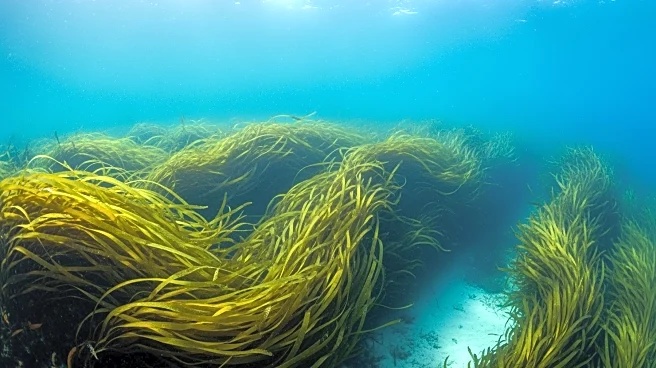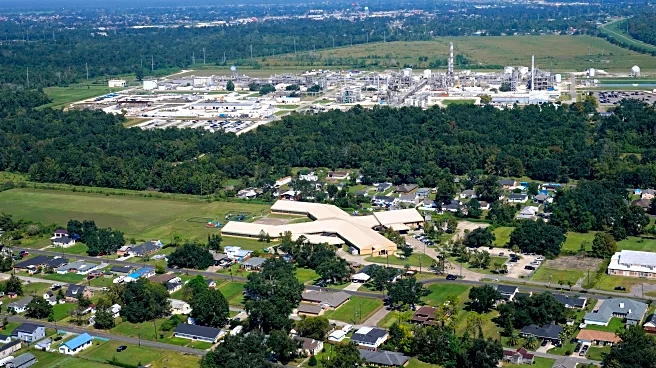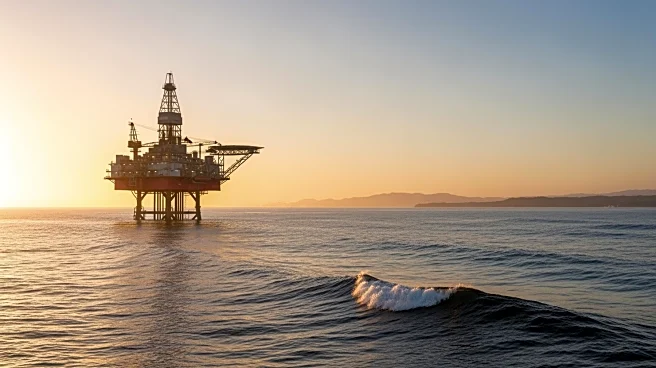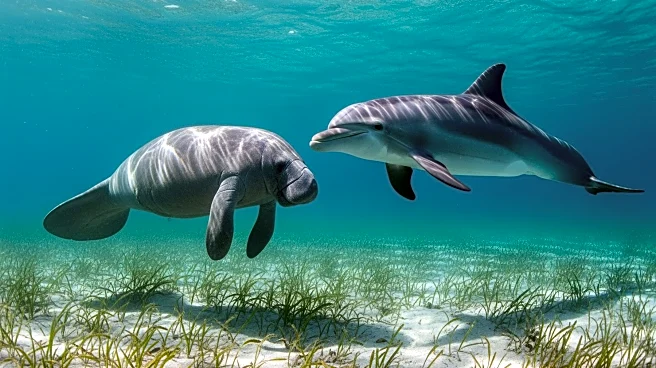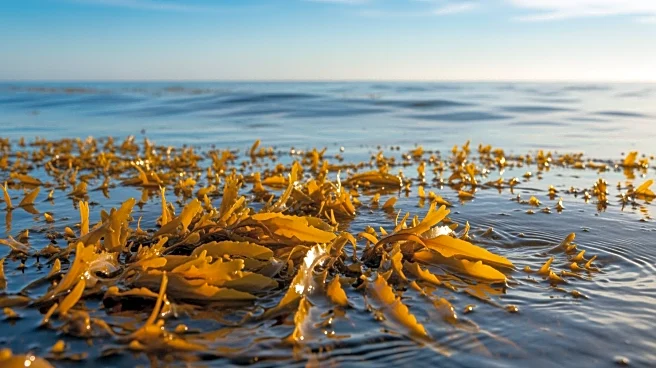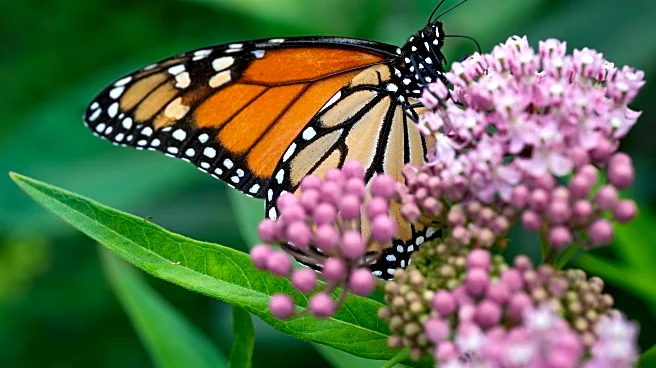What's Happening?
The Great Atlantic Sargassum Belt, a massive floating carpet of seaweed, has reached unprecedented levels, stretching thousands of miles across the Atlantic Ocean. In May 2025, satellite estimates indicated
the belt contained 37.5 million metric tons of biomass. Coastal communities from Florida to the Caribbean have been dealing with the impacts of this seaweed, which disrupts beaches, harms wildlife, and affects tourism. Scientists are investigating the causes, which include climate-driven changes in oceanic nutrient cycles, industrial pollution, and warming waters. The belt's growth is linked to increased nitrogen and phosphorus levels, largely due to human activities such as agricultural runoff and sewage discharge.
Why It's Important?
The expansion of the Sargassum Belt poses significant ecological and economic challenges. It disrupts marine ecosystems by suffocating coral reefs and creating oxygen-deprived zones. Economically, it affects tourism-dependent regions, where beach clean-up costs are rising, and visitor numbers are declining due to the unsightly and odorous seaweed. The phenomenon highlights broader environmental issues, including the impact of human activities on ocean chemistry and the potential for long-term ecological shifts. Understanding and mitigating these impacts are crucial for preserving marine biodiversity and supporting coastal economies.
What's Next?
Researchers continue to study the belt's growth patterns and underlying causes, aiming to develop strategies to manage its impact. Coastal communities may need to invest in more effective clean-up technologies and explore sustainable solutions to reduce nutrient runoff. International collaboration could be essential in addressing the broader environmental factors contributing to the belt's expansion. Policymakers may consider regulations to limit pollution and promote ocean health, while scientists work on innovative approaches to control the seaweed's growth.
